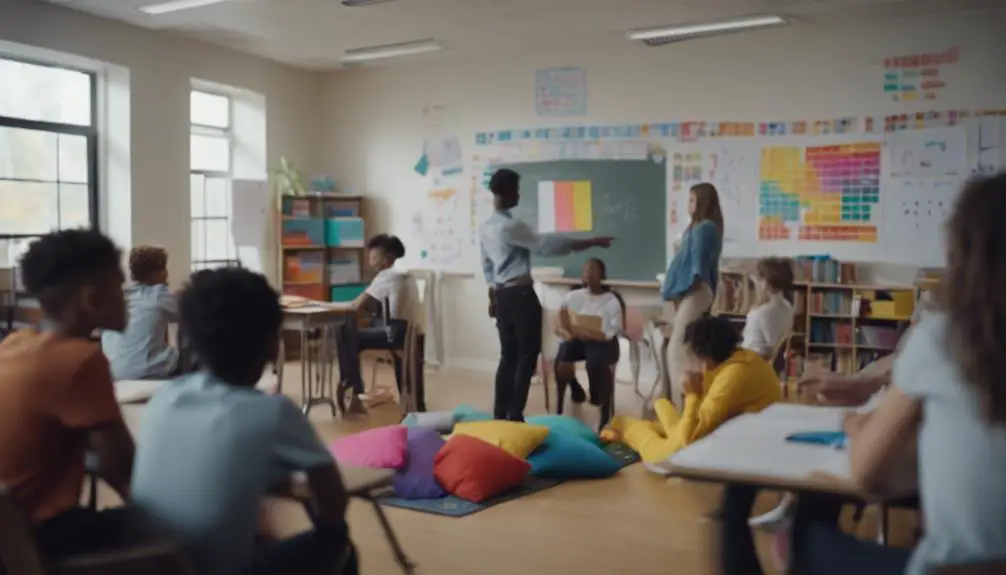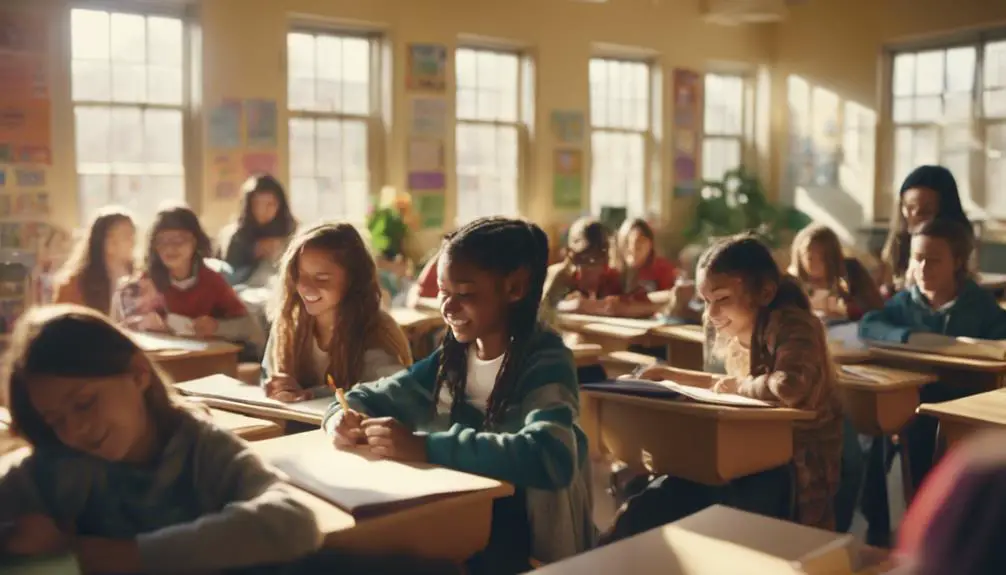When it comes to the classroom, each student is unique in their own way. Although students may share similar interests or backgrounds, there are many ways that they differ from one another.
From learning styles to interests and abilities, no two students are exactly alike. Understanding these differences is key to providing an effective learning environment that meets the needs of all learners.
In this article, I will discuss how understanding these distinctions can help create a more inclusive and engaging learning experience for all.
I will also explore some of the ways in which students differ from each other in the classroom and what teachers can do to accommodate these differences.
Reasons Why You Should Be Aware of the Differences among Your Students
It is important to be aware of the differences among your students. Each student brings different abilities and experiences to the classroom, and understanding these differences can help you create a more inclusive environment for everyone. Here are nine reasons why you should be aware of the differences among your students:
1. It will allow you to customize instruction to meet their individual needs.
2. It can help you better understand their cultural background.
3. It can provide insight into how each student learns best.
4. It can help build relationships with your students by making them feel valued.
5. It can help create an environment where everyone feels safe and respected.
6. It can prevent bias or stereotypes from forming in the classroom.
7. It can foster collaboration among diverse groups of students.
8. It can give you an opportunity to discuss topics such as race and identity in a respectful manner.
9. It will show that you care about each of your students’ unique perspectives and contributions.
Being aware of the differences among your students is essential for creating an equitable learning environment.
Ways Your Students Differ from One Another
I have found the following differences among students in every classroom I have ever taught:
1. Differences in Learning Styles
It’s not just the differences in background and experience that make students unique. Learning styles can also play a role in how students approach their studies.
While there are many different learning styles, visual, auditory, and kinesthetic/tactile are the most common.
Visual learners prefer to use pictures, diagrams, and illustrations to better understand the material. Auditory learners learn best when they can hear information.
Kinesthetic/tactile learners prefer to use their hands to manipulate objects and engage in physical activities to learn.
These differences can make it challenging for teachers to provide an equitable education to all students.
That’s why it’s important to provide differentiated instruction and activities that allow students to learn in their own style.
2. Differences in Background and Experience
The differences in background and experience of students in a classroom are varied and can have a significant impact on their learning.
Students come from different cultural and religious backgrounds, have different levels of educational experience, and have varying levels of economic status.
These factors can all affect their attitude toward learning, their engagement in the classroom, and their ability to interact with others.
3. Differences in Age
When it comes to understanding the differences between students in the classroom, age is an important factor to consider.
Younger students are typically more energetic and have shorter attention spans. This can make it difficult to keep them engaged and on track in the classroom.
Older students, meanwhile, may have longer attention spans, but may also be more tired and less motivated to learn.
Furthermore, different age groups may have different interests and perspectives, which can make it difficult to find topics and activities that will engage all students in the classroom.
To ensure that all students are given the opportunity to learn, it is important for teachers to be aware of the age differences in their classes and to adjust their teaching strategies accordingly.
4. Differences in Gender
Gender can have a major influence on the way students learn and interact in the classroom. While there are many similarities between the genders, there are some significant differences.
For instance, girls tend to be more focused on reading, writing, and self-expression, while boys are more likely to be physically active and engage in activities that involve competition.
Girls are more likely to pay attention to detail and to be more compliant with rules, while boys are more likely to challenge authority and be more independent.
Girls are more likely to form strong relationships with their peers and to seek out group activities, while boys are more likely to prefer to work on tasks alone.
It is important to recognize and understand these differences in order to create an inclusive classroom environment that works for all students.
5. Differences in Socio-Economic Status
Socio-economic status is an important factor to consider when looking at the differences between students in the classroom.
Students from lower-income families may have fewer resources for learning, such as books, computers, or tutoring, and may be less prepared for classroom demands than their peers from higher-income backgrounds.
In addition, students from lower-income families may have experienced more instability in their lives than their higher-income peers, making it more difficult for them to focus on learning in the classroom.
Teachers should be aware of these disparities and be prepared to provide additional support to students from lower-income backgrounds.
6. Differences in Cultural and Religious Perspectives
Cultural and religious perspectives can create a wide range of differences in the classroom.
Students may have different beliefs about education that are shaped by their cultural backgrounds and religious beliefs.
For instance, some students may believe that education is a privilege, while others may view it as a right.
Additionally, students from different cultural backgrounds may have vastly different expectations for behavior in the classroom, from acceptable dress to appropriate responses to authority.
Religious beliefs can also shape the way students approach their studies, with some believing that their faith is the key to success, while others may view their studies as a way to honor their God.
Understanding these differences can be key to helping students of all backgrounds find success in the classroom.
7. Differences in Interests and Hobbies
As students vary by age, gender, background, language ability, and socio-economic status, so too do their interests and hobbies.
Some students may be passionate about art or music, while others may prefer playing sports or games.
Some students may be interested in books, while others may be more interested in technology or engineering.
It is important to recognize that all of these interests and hobbies can be beneficial to the student’s development and should be supported and encouraged in the classroom.
By providing students with the opportunity to engage in activities that they are passionate about, teachers can help foster a sense of self-worth and belonging.
Additionally, by recognizing and supporting each student’s individual interests and hobbies, teachers can create a safe, inclusive environment where all students are respected and valued.
8. Differences in Social Skills
Social skills are an important part of developing relationships in the classroom. Students of all ages have different levels of social skills, and this can have a significant impact on their ability to interact with each other.
Some students may be more talkative and outgoing, while others may be more introverted and shy.
Some may be more confident and able to take on leadership roles, while others may struggle with communication.
The teacher can help social development by providing opportunities for students to practice their skills in a safe and supportive environment.
This could include activities such as role-playing, cooperative games, or even just open discussion.
By encouraging students to interact with each other in a positive way, the teacher can help foster a sense of community in the classroom.
9. Differences in Language Abilities
It is important to recognize that students come to the classroom with different language abilities.
Some students may have a native language other than English and may need extra support to improve their language skills.
Others may have difficulty understanding complex language or abstract concepts. It is important to provide differentiated instruction and resources to accommodate the diverse language needs of students in the classroom.
For example, providing bilingual dictionaries, picture books, and videos can help students to better understand the material.
Additionally, providing targeted instruction in English as a second language can be beneficial for those who need it.
By taking into account the varied language abilities of students, it is possible to create an inclusive and supportive environment in the classroom.
10. Differences in Parental Involvement
Parental involvement is often an important factor in a student’s success in the classroom. Parents can provide support and guidance to their children, helping them to identify their individual strengths and weaknesses and develop strategies to work on their weaknesses.
They can also provide resources and support, such as tutoring, extracurricular activities, or educational software.
Parental involvement also helps to build trust between the student and the teacher, which is essential for a successful learning environment.
Additionally, parents can help to bridge the gaps between school and home, providing an understanding of the material being taught and helping to connect students to the larger community.
By taking an active role in their child’s education, parents can help to ensure that their child is successful in the classroom and beyond.
Conclusion
Students are unique individuals with different strengths, weaknesses, interests, and goals. In the classroom, this individualism creates a diverse learning environment that allows students to learn from one another while also pushing each other to become better. With different backgrounds and perspectives, students can share experiences and ideas that enrich the classroom experience for everyone. While all students have much in common, it is their differences that create an inspiring learning space. It is important for teachers to recognize and accept these differences in order to create an environment where all students feel safe, respected, and supported. By embracing the diversity of their students’ backgrounds and perspectives, teachers can ensure the classroom remains a stimulating and welcoming place for everyone.

















